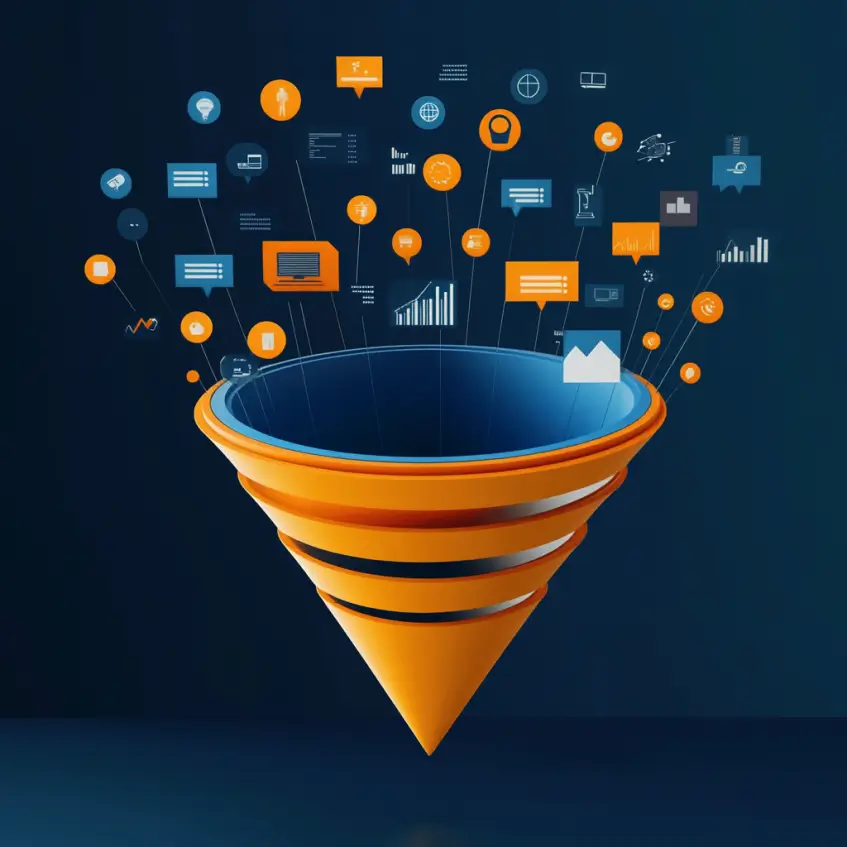Ever feel like you’re juggling too many apps and spreadsheets to keep track of your customers? You have website contacts, email lists, maybe sales notes – all in different places. What if these tools could talk to each other? That’s where CRM integration comes in, and it’s a game-changer for businesses of all sizes!
This guide will simply explain what a CRM is, what integration means, and how it can make your life easier and your business smarter, with real-world examples.
First, What’s a CRM?
CRM stands for Customer Relationship Management. In simple terms, it’s a system (often software) that helps you store and manage all your customer information and interactions in one central place. Think of it as a super-powered digital address book combined with a detailed diary of every conversation, purchase, and query related to each contact.
And What is CRM Integration?
CRM integration is like building bridges between your CRM and the other software tools you use every day. It allows these different systems to automatically share information, so you don’t have to manually copy-paste data from one place to another.
Why Bother with CRM Integration? The Big Benefits (with Examples):
Connecting your CRM to other tools isn’t just a techy fad; it offers powerful advantages:
- Saves You Massive Amounts of Time & Reduces Manual Work:
- How it works: Automates data entry and updates across systems.
- Example: Imagine someone fills out a contact form on your website. Instead of you manually typing their details into your CRM, an integration can automatically create a new lead record in your CRM with all their submitted information. Poof! Hours saved weekly.
- Gives You a Complete 360-Degree View of Your Customers:
- How it works: Consolidates customer data from various touchpoints into one profile.
- Example: When you look up a customer in your integrated CRM, you could see not just their email and phone number, but also:
- What products they bought (from your e-commerce platform integration).
- If they’ve submitted any support tickets (from your helpdesk software integration).
- Which of your marketing emails they’ve opened (from your email marketing tool integration). This holistic view helps you understand them much better.
- Massively Improves Customer Service & Support:
- How it works: Equips your team with full customer context instantly.
- Example: A customer calls with an issue. With an integrated CRM, your support agent can immediately see their entire history – past purchases, previous queries, notes from other team members. This means faster resolutions, no need for the customer to repeat themselves, and a much more personal and efficient service.
- Supercharges Your Sales & Marketing Efforts:
- How it works: Enables better targeting, personalization, and lead management.
- Marketing Example: When someone subscribes to your newsletter via a form on your blog, the integration can automatically add them to a specific “Newsletter Subscribers” list in your CRM and maybe even tag them based on their interests (if your form captures that). This allows for highly targeted email campaigns.
- Sales Example: Your sales team can see in the CRM that a lead has recently downloaded a specific guide from your website or attended a webinar. This gives them a perfect, relevant conversation starter and insight into the lead’s interests.
- Ensures More Accurate Data & Reliable Reporting:
- How it works: Eliminates data silos and reduces errors from manual entry.
- Example: With integrated systems, customer information is updated in (or near) real-time across the board. If a customer updates their email address via their account on your website, that change can automatically reflect in your CRM and email marketing tool. This means your reports on sales, customer engagement, and marketing effectiveness are based on consistent, up-to-date information.
Common Tools You Might Integrate with Your CRM:
- Your Website: For contact forms, user registrations, and lead capture.
- Email Marketing Platforms: To sync subscriber lists and track campaign engagement.
- E-commerce Platforms: To manage customer orders, purchase history, and abandoned carts.
- Customer Support/Helpdesk Software: To log and track customer issues and communications.
- Social Media Platforms: To capture leads or track interactions.
- Accounting Software: To sync customer invoices and payment statuses.
- Calendar & Scheduling Tools: To manage appointments and sync them with customer records.
How Does CRM Integration Generally Work? (The Simple Version):
There are a few common ways systems connect:
- Native or Direct Integrations: Many CRMs and other popular tools build integrations directly into their platforms. These are often the easiest to set up, sometimes just a few clicks.
- Third-Party Integration Platforms (Connectors/Middleware): These are services specifically designed to act as a bridge between hundreds of different apps. You tell them “if this happens in App A, then do that in App B.”
- APIs (Application Programming Interfaces): This is a more technical way for software to talk to each other. It offers great flexibility but might require a developer to set up custom integrations if a direct or third-party option isn’t available.
Tips for Successful CRM Integration:
- Clearly Define Your Goals: What specific problem do you want to solve or what process do you want to improve? (e.g., “I want all new e-commerce customers to be automatically added to my CRM.”)
- Choose Compatible Tools: When selecting a CRM or other business software, check what integration options they offer.
- Start Simple: Don’t try to connect everything all at once. Pick one or two high-impact integrations to begin with.
- Map Your Data: Before you connect, understand what information needs to flow between systems. For example, which field in your website form corresponds to which field in your CRM?
- Test, Test, Test: After setting up an integration, run several tests to ensure data is flowing correctly, accurately, and to the right places.
Conclusion: Connect and Conquer!
CRM integration might sound technical, but its core purpose is simple: to make your business run smoother, your customer data more useful, and your teams more efficient. By allowing your different tools to share information automatically, you free up valuable time, gain deeper insights into your customers, and ultimately pave the way for better relationships and growth.
Start by identifying one key area where integration could help, explore the options, and take the first step towards a more connected and efficient business!



